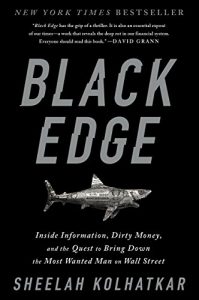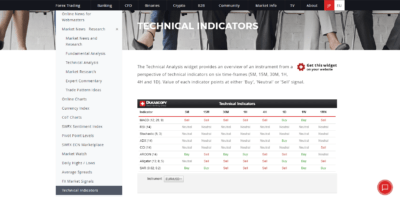Contents:

Many options investors use this opportunity to purchase long-dated options and look to hold them through a forecasted volatility increase. Conversely, as the market’s expectations decrease, or demand for an option diminishes, implied volatility will decrease. Options containing lower levels of implied volatility will result in cheaper option prices.

Any such change is not a change in accounting policy but must nevertheless be supported by sound rationale that the new or different information produces a better estimate of expected volatility. However, question 2 in Section D.1 of SAB Topic 14 indicates that such exclusions are expected to be rare. Developing volatility assumptions is a common practice in the financial community, where many sophisticated techniques have been developed that go beyond simply calculating volatilities based on historical stock prices. The Black-Scholes, Monte Carlo, and lattice models all use a volatility input, which may come from a variety of sources (e.g., historical data, implied market volatility, peer group volatility). There are various implied volatility rank screeners available, with most websites offering some version or level of implied volatility rank screening and scanning.
What makes implied volatility go up or down?
Some prefer to wait for these types of shock to occur in order to initiate short Vega trades; others like to have long Vega trades and wait for these events to occur. Certain strategies will benefit from a rise in Implied Volatility and others will benefit from a fall in volatility . Your portfolio may not perform exactly as you would expect if you look at the total Vega number; you would need to also consider the individual stocks and their movements in Implied Volatility. Suppose a trader has an Iron Condor on AAPL, a butterfly on GOOG, a bull put spread on IBM and a short strangle on NFLX.
But first, keep reading to be sure you educate yourself about what implied volatility is, and how you should properly use it when making stock decisions. But before you get too excited and start texting all your friends saying you know which direction a stock is going to go, it’s important to know that implied volatility numbers are just predictions. And although they are calculated using specific mathematical functions, they aren’t always correct and are subject to being affected by current events.
Figure 2 shows some clear trends in the implied volatility of weekly options before Bank of America’s earnings. A target implied volatility of 80% appears to be a reasonable goal when trading IV before BAC earnings, likewise an implied volatility below 50% appears to be a good entry point. In a rising market, calls will generally have a higher implied volatility while puts will have a lower implied volatility; in a declining market, puts will have a higher implied volatility over calls. This reflects the increased demand for calls in a rising market and a rising demand for puts in a declining market.

Keep in mind that as the stock’s price fluctuates and as the time until expiration passes, vega values increase or decrease, depending on these changes. This means an option can become more or less sensitive to implied volatility changes. Investors may use implied volatility and historical volatility to determine if they think an option is appropriately priced and utilize this information as part of their strategy. If an investor believes volatility is high and will decline, they may choose to sell options because lower volatility will equate to lower option prices. Implied volatility is also used to determine the expected price range for a security.
If such options were cheap, Wall Street would literally be giving money away. Implied volatility is a forward-looking metric that’s designed to gauge how volatile the market may be in the future. This measure of volatility doesn’t predict whether the price of a stock, or any other type of security, will move up or down.
The price of time is influenced by various factors, such as the time until expiration, stock price, strike price, and interest rates. Vega is the amount options prices change for every 1% change in implied volatility in the underlying security. Vega represents an unknown element because future volatility cannot be predicted.
Futures
The historical data includes the bid and ask price for all calls and puts at each strike price and date of expiration at the closing bell for each day. The implied volatility is rarely included but everything necessary to calculate it is included in the data or readily accessible. This chain of events shows how the movement in implied volatility affects the pricing of a share option.
- Theta tells you how much the price of an option should decrease each day as the option nears expiration, if all other factors remain the same.
- Downside put options tend to be more in demand by investors as hedges against losses.
- For the options trader, implied volatility connects standard deviation, the potential price range of a security, and theoretical pricing models.
- Implied volatility does not indicate the direction of the movement an asset may take.
- You could sell an iron condor outside this band to potentially profit on the volatility crush after earnings if the pricing makes sense from a risk/reward standpoint.
To assist our premium members in how to use our member reports, I produced a video for the stock report and one for the ETF report. The screenshot below shows the location of these videos on the member site. This can also be demonstrated by plotting the normally distributed returns.
Standard Deviation And Implied Volatility
This phenomenon is sometimes referred to as the “volatility rush.” This effect can be viewed in Figure 2 and assumes that implied volatility rises 10%. In the process of selecting option strategies, expiration months, or strike prices, you should gauge the impact that implied volatility has on these trading decisions to make better choices. You should also make use of a few simple volatility forecasting concepts. This knowledge can help you avoid buying overpriced options and avoid selling underpriced ones.
3) when time value evaporated close to expiration and the ITM call’s price moved to parity. This example will illustrate a radically different approach to selling high IV. Premium was so high on Dendreon in 2007 and the stock was moving due to news pending on its Provenge drug in development. Where C is the theoretical value of an option, and f is a pricing model that depends on σ, along with other inputs.
- The combination of these metrics has a direct influence on options prices—specifically, the component of premiums referred to as time value, which often fluctuates with the degree of volatility.
- Instead, it’s used to assess how likely it is that a security’s price will be sensitive to volatility in the broader market.
- The determination of volatility is a matter of judgment and will vary depending on each specific set of facts and circumstances.
Any trader can use Implied Volatility to calculate a presumed range for an option throughout its entire life. As with any market engagement, whether around earnings or otherwise, the most important aspect to consider is risk management. If you can’t quantify the risk, it may be better to step aside and not play at all. A big inhale can be thought of as rising realized volatility or implied volatility , and a big exhale can be viewed as falling realized volatility or IV. As you know, a stock can only go down to zero, whereas it can theoretically go up to infinity. For example, it’s conceivable a $20 stock can go up $30, but it can’t go down $30.
To understand how we can use standard deviation in our trading, we need to take a very brief trip back to our senior year math class and talk about normal distribution. The expiration date is the day the option no longer exists, and the right to purchase or sell the underlying security expires. It therefore gives us the greatest chance to exploit our view of volatility compared to other traders. Historical Volatility is calculated by measuring the past price movement of a stock.

In finance, a spread usually refers to the difference between two prices of a security or asset, or between two similar assets. Option Alpha calculates probabilities for millions of potential options positions using live market data so you can find new ideas without the guesswork. For example, a security with implied volatility between 20 and 40 over the past year has a current reading of 30. The security’s IV rank is 50 because implied volatility is at the midpoint of the past year’s range. IV rank defines where current implied volatility is compared to implied volatility over the past year.
Volatility and Implied Volatility
The CBOE https://forexhistory.info/ index is an indicator of overall market volatility (S&P 500). This is usually the main driver of equity IVs, but there are several other effects that DON’T depend on stock moves, eg. You have to wade through a lot of jargon when navigating the world of options.
Since options prices generally increase with rising volatility, buying options is one way to profit from increasing price swings. Because markets may move both up and down with greater volatility, buying a straddle or strangle will often be used. Implied volatility does not have a basis on the fundamentals underlying the market assets, but is based solely on price. Also, adverse news or events such as wars or natural disasters may impact the implied volatility.
Options Trading For Volatile Markets: Strategies for Adapting To … – Best Stocks
Options Trading For Volatile Markets: Strategies for Adapting To ….
Posted: Sat, 25 Feb 2023 15:07:07 GMT [source]
With this https://forexanalytics.info/, you get lots of possibilities for which way a stock or option’s price could go. You might use this pricing model if you’re trading American options, which are options that can be exercised at any time prior to the expiration date. It is used in models such as Black-Scholes that treat the spread as being characterized by a single parameter. Events like earnings reports tend to make Black-Scholes less valid, as Black-Scholes is justified by treating stock prices as a random walk that tends towards a normal distribution due to the Central Limit Theorem. When one event such as an earnings report is dominating a period, the Central Limit Theorem, and thus Black-Scholes, has reduced validity. While volatility just measures the variance of the spread, large events can make other parameters, such as skew and kurtosis, important considerations.
An initial guess of the implied volatility was used to calculate a price for the call option. This calculated price for the call option was compared to the actual bid price of the call option as reported in the data. The implied volatility was adjusted until the calculated call price equaled the bid price of the call according to the available data. Implied volatility is an estimate of stock volatility through the life of an option. This makes it important because its level decides the extent of impact time value will have on the option.
Therefore it is the forecast of a specific security based on the conditions of the market itself. Then, as the rush began to slow, the volatility returned to normal, only to surge again in 2021 as the delta variant began to arrive on US soil. Why toilet paper has anything to do with COVID-19, investors have no idea, but the brand behind many toilet papers, P&G reported increased volatility in their stock due to ramped-up toilet paper production. The stock market can be a scary place to navigate without a map—but thanks to implied volatility, making an informed prediction is possible. Calculations for historical volatility are generally based on the change from one closing price to the next.
Therefore looking at the history of the implied volatility of Tesla can help you decide on when you should buy and or sell your Tesla options. This is a forecasting technique, and being aware that high and low volatility times come in waves, can help a trader to fine-tune their technique for trading options. Of course, this isn’t a sure thing, and your predictions won’t always be right, but this is a decent strategy to follow and it can help you to develop other strategies to use when trading in your portfolio. Each level features a different execution time and has volatility factored into it—to show the numerous possible outcomes available with that stock option. Thus, the binomial model works best with the American system where options can be executed at any time because you can see the outcome if you were to sell the selected option at any given time before it’s expiration. The point is, investing in stocks is risky, but with numbers like implied volatility, you can head into your trading session with a better idea of how a stock will change in price over time.

Out of the https://day-trading.info/ option deltas will be higher if you go 10 points away from the stock price in a high IV environment compared to a low IV environment. Higher IV means wider expected ranges from the stock price, which means delta values are spread out much more than in a low IV environment. Low implied volatility for a specific product depends on where the historical range has been, and we can use IV rank or IV percentile to get a better gauge on the product we’re trading. Generally speaking, IV% in the teens for ETFs is relatively low, and the 20% to 30% range for equities is relatively low, depending on the product.
